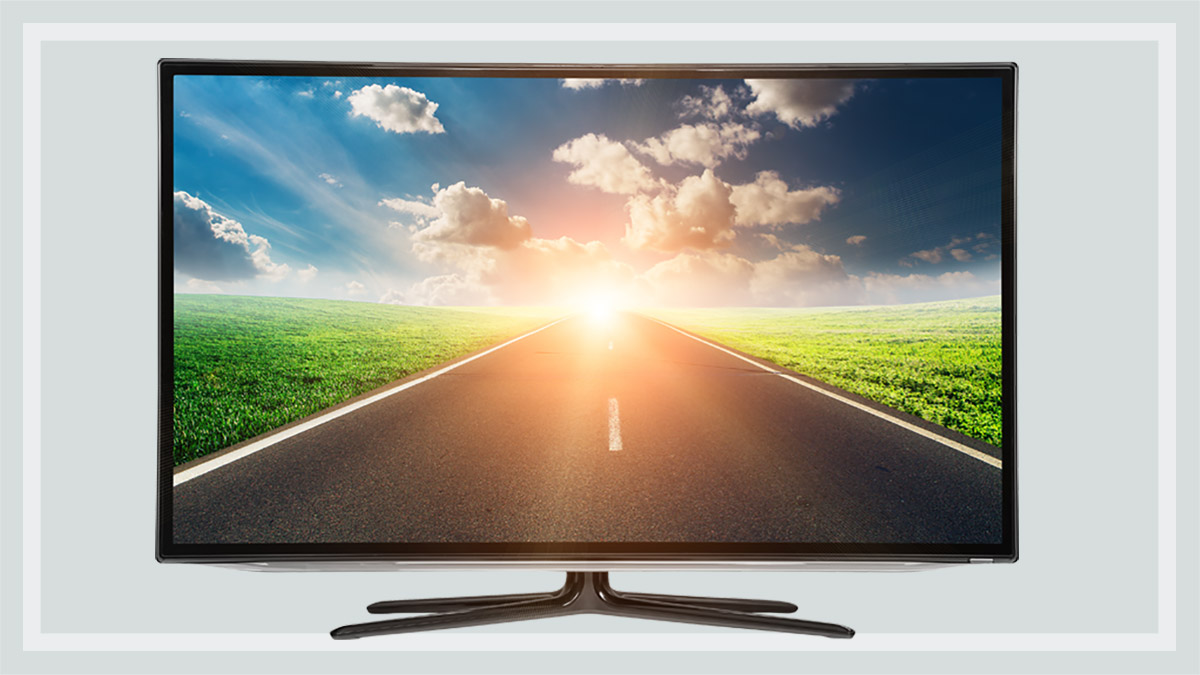Get our independent lab tests, expert reviews and honest advice.
The best smart TVs for watching movies and streaming shows
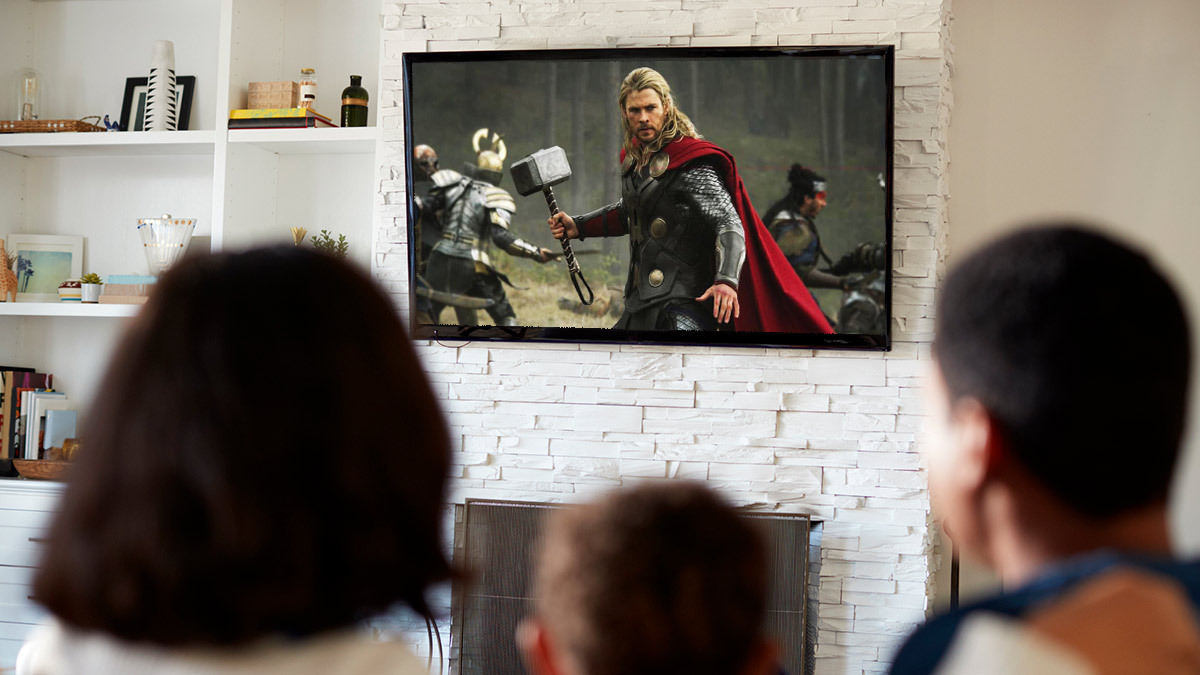
Is there anything better in winter than a serious movie marathon or TV bingefest, complete with delicious snacks and snuggly blanket? We think not.
A flashy new TV can bring your favourite films and shows to life in spectacular fashion, but how do you tell the A-list models from the B-grade pretenders?
Factors like picture clarity, screen refresh rate, processor speed and colour quality all play a leading role in whether your show pops or flops on screen.
But it’s not just the upfront specs of a TV’s components that matter. The quality and internal build of them are important too, and that’s much harder to assess at first glance.
That’s why CHOICE experts test TVs meticulously in our labs, rating and reviewing over 60 popular units from brands like LG, Samsung, Hisense, Sony, TCL, Aldi Bauhn and many more.
It’s showtime! The best TVs for movies and series revealed
Our lead TV tester Scott O’Keefe and team of in-house experts spend all year watching movies (it’s a tough job) to find the best models for your home cinema experience. And, spoiler alert, it’s not always the most expensive ones.
Usually our scores for movies feed into our overall CHOICE Expert Rating for each TV, but as a special treat, we’re revealing them below. So if you’re a Disney+ die-hard or you love chilling with Netflix, these are our top tested picks for flicks and streaming shows.
Of course, that’s just one criteria for a great TV. Become a CHOICE member to see our full reviews, which include our other ratings for HD, SD and UHD viewing, plus ratings for smart TV features, user interface, remote and more.
To judge which telly gives the best movie-watching experience, a panel of three experts evaluate a TV’s video quality on the three key video resolutions: standard definition (SD), high definition (HD) and ultra high definition (UHD, also known as 4K).
They do this by watching the same movie scenes on every model and comparing them against a reference TV. The three resolution ratings are then averaged to get the final movie score, presented in the tables below.
For the curious, the films we watch include Get Shorty on SD, Casino Royale on HD Blu-ray and Deadpool on 4K Blu-ray.
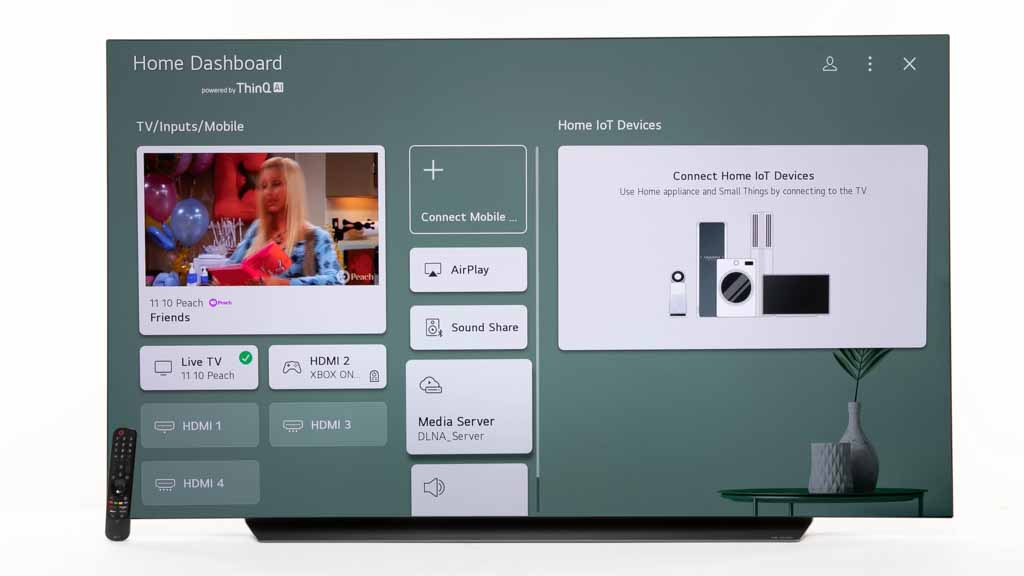
Large-screen TV
- Best scoring for movies: LG OLED65C1PTB
- CHOICE movie rating: 93%
- Price: $3995
- Size: 65 inches
With one of the highest movie ratings you would expect this to be among the most expensive models available from LG – but with a recommended retail price of $4000 it’s pretty damn good bang for your buck as far as top-quality movie watching goes. Also, we found this TV in the retail chains for less than $3000, making it even better value.
The sound for a TV was also impressive with good good presence, crisp vocals and a well balance sound overall, although the boomy bass may not be to everyone’s taste.
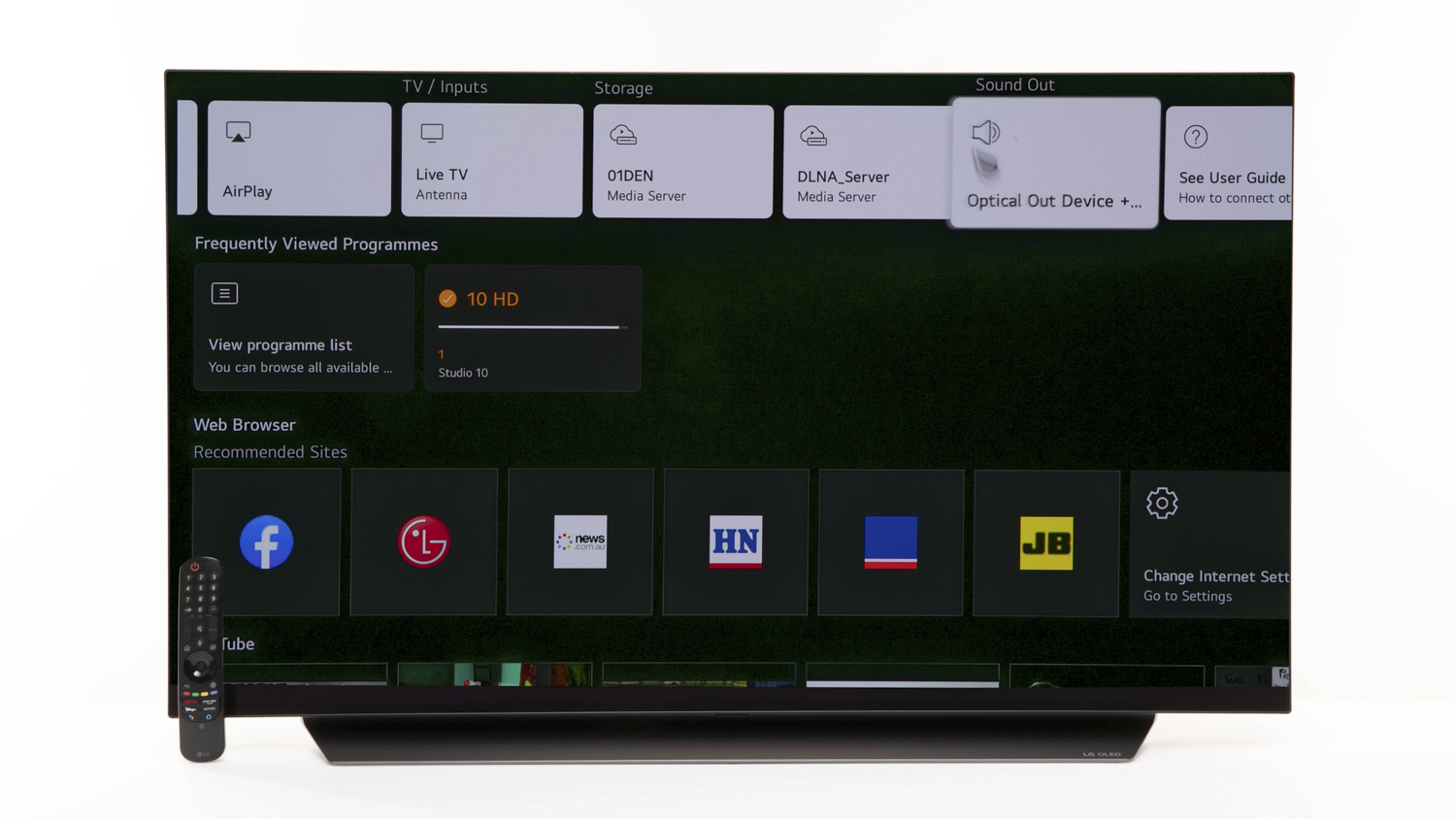
Medium-screen TV
- Best scoring for movies: LG OLED48C1PTB
- CHOICE movie rating: 87%
- Price: $2576
- Size: 48 inches
This is a fairly new size option for an OLED screen and is a nice option for rooms where a 55-inch TV is just a bit too big. This model is particularly good for gaming fans as this TV is not only a good size to get up and close, it also has a high refresh rate and support for gaming settings to optimise the screen for a competitive edge.
The TV also has excellent smart TV features on offer so you can enjoy your favourite streaming services, by using the remote or simply telling the TV what you want to watch.
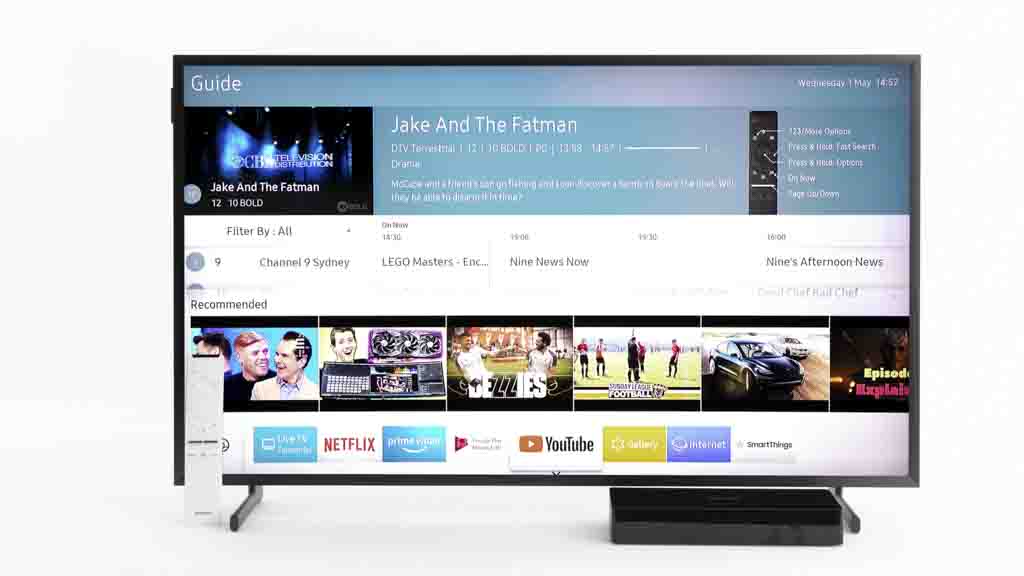
Small-screen TV
- Best scoring for movies: Samsung QA32LS03TBW
- CHOICE movie rating: 85%
- Price: $795
- Size: 32 inches
TVs with smaller sizes like 32 inches are often only available at the entry-level range from a TV company but the Samsung QA32LS03TBW is different in that it can be hung on the wall like a work of art. You can even get different display frames to make it look like a painting rather than a TV.
Its video performance is very good but there is no support for 4K video. It will play a 4K disc and stream a 4K video but you will only see it in HD video resolution which isn’t a big issue as the size of the screen means you will not notice the difference unless you sit really close to the screen.
All the smart TV and voice assistant features are on offer and the TV is also useful when you aren’t watching anything as you can enable the auto screen saver where the TV scrolls through the 20 or so artworks or you can play your own photo collection.
A movie lover’s guide to buying a TV
1. Know your source
Before buying a new box, it’s important you know the video resolution of the movies you’ll mostly be watching. They could be standard definition (720 x 576 pixels), high definition (1920 x 1080) or ultra high definition, also known as 4K (3860 x 2160). Our tests show TVs perform differently at different resolutions.
If you’re watching an old SD DVD on a 4K TV, it may attempt to upscale the video to display at the higher resolution. How well it bridges this ‘gap’ depends heavily on the quality of the unit and its internal processors. This can vary notably between models and definitions, which is why we score separately for SD and HD sources in our full reviews.
2. OLED or LCD – which is better?
According to our experts, OLED is definitely the showstopper here, particularly if you can control the ambient light in your TV room. But OLED TVs are usually more expensive, so it will depend on your budget.
What’s the difference? Well, LCD (liquid-crystal display) TVs require a light source behind their screen panel, meaning they can go very dark grey but never full black. By comparison, OLED (organic light emitting diode) screens have lights integrated within each diode and they can simply turn off when required, giving you true blacks.
3.
What size TV do you need?
Bigger is always better, right? Well, not always with TVs, because it also depends on your room size and how close you watch. If you sit too close to a massive screen, you may be able to see the pixels – and that’s not pretty.
As listed in our TV buying guide, there are three important factors you need to consider for the best viewing experience:
- Your TV’s screen resolution (HD or 4K)
- The size of your room
- How far you sit from the screen.
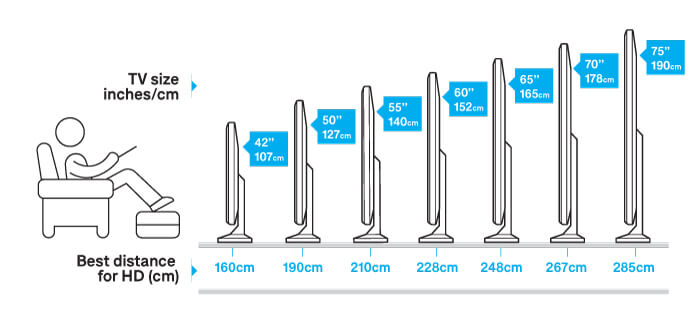
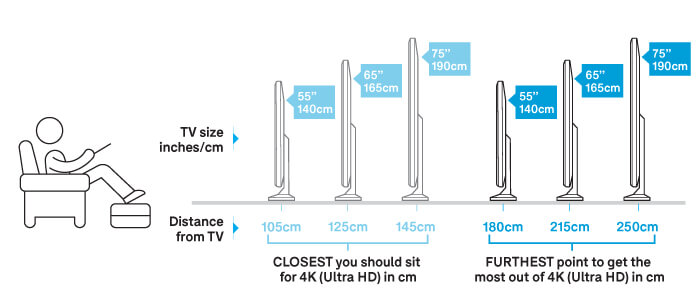
4. Testing a TV instore
Retailers usually play animated movies on instore TVs because they look amazing. Live-action films are a different ball game, so switch to one of these to truly test a model’s mettle. If that’s not possible, take your own Blu-ray to test.
Assess key specs like picture clarity (are faces sharp?), motion, and colour balance (do skin tones look right?). Cycle through picture modes and note nasties like judder (lack of smooth panning), motion blur (trailing elements behind fast-moving objects) and odd saturation.
Store TVs are often muted too, so turn the volume up if you can and study the sound. Is it rich or tinny? How do voices sound? If it’s ordinary, you might need to buy an accompanying soundbar – check out our soundbar reviews.
5. Suss out the screen angle
Got a big family or lots of housemates? Then you’ll want to test the screen angle and ensure they’ll all be able to see well.
As you move sideways from the centre of the screen, most TVs will lose some colour and contrast. Stand in the middle at your normal viewing distance and then take a few steps sideways. If the picture degrades too much, keep moving till you find a screen that does a better job.
Image credit: Avengers: Endgame.

